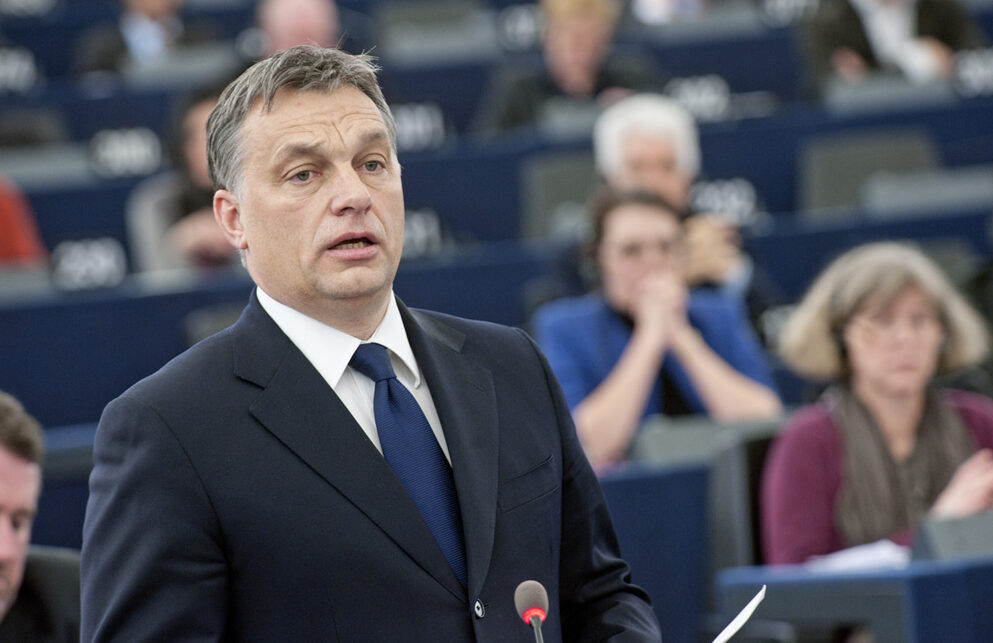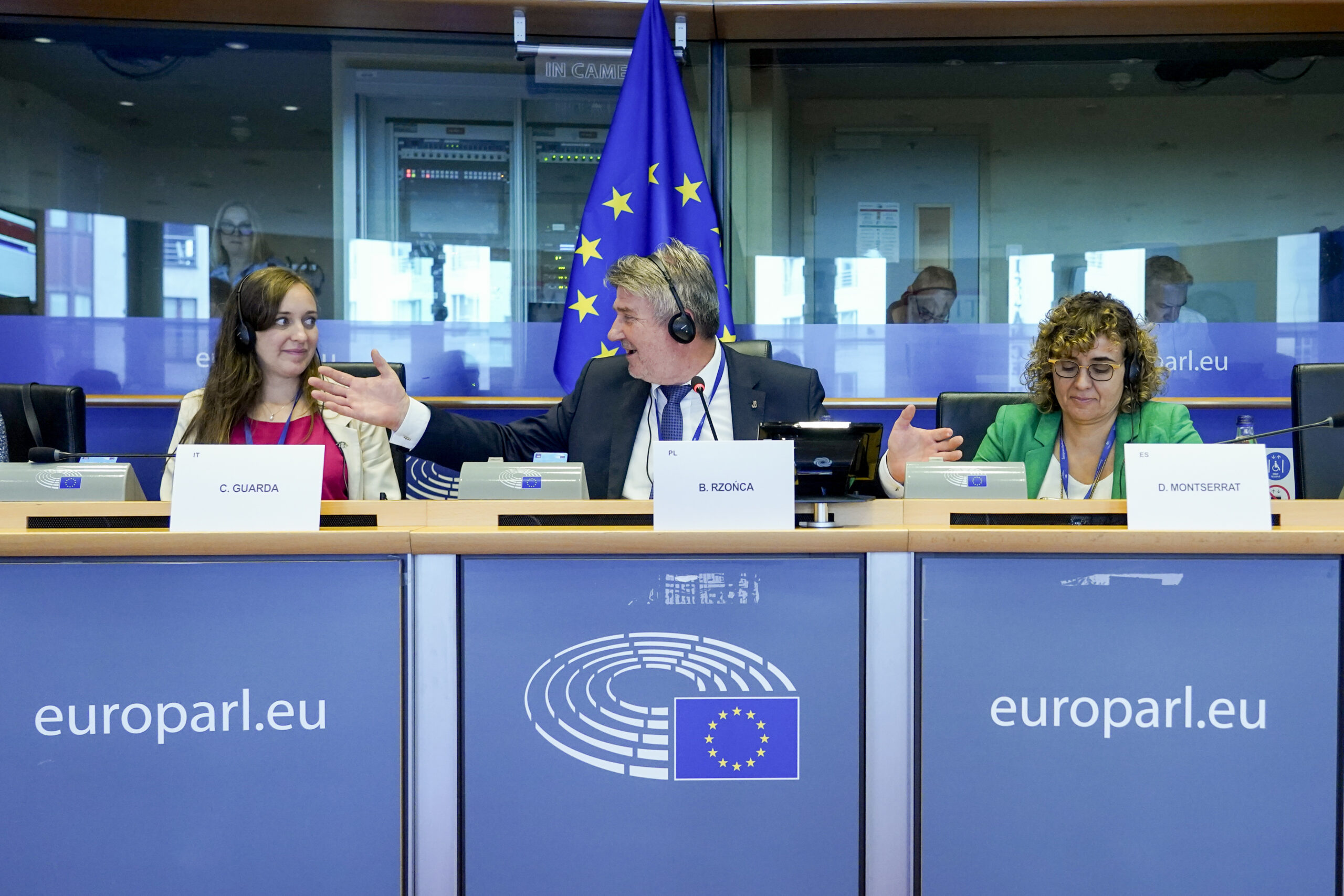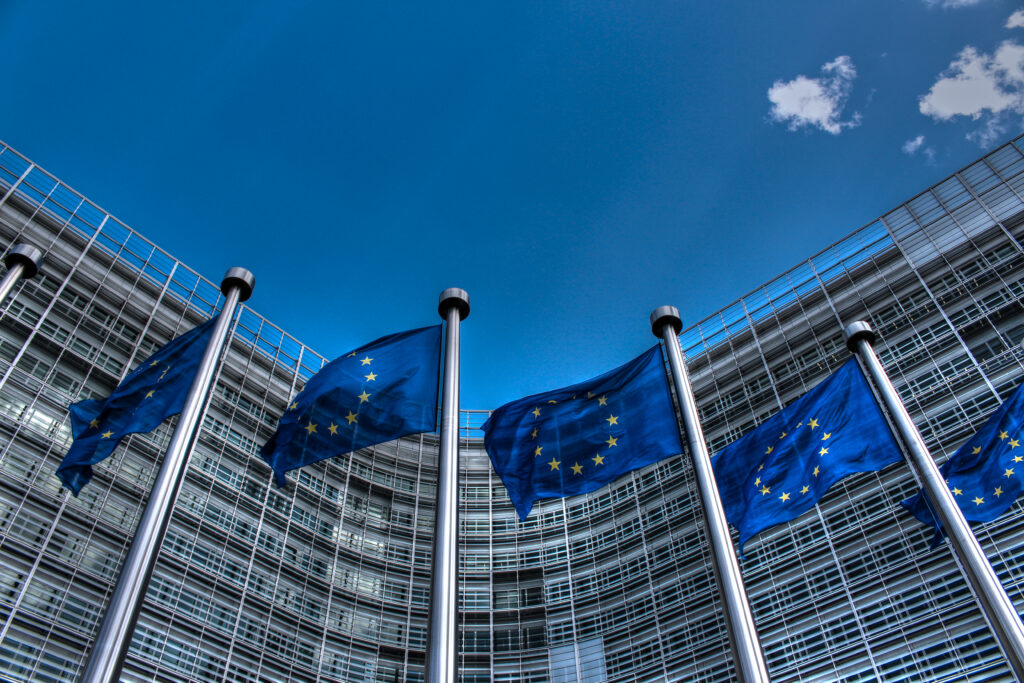Attacks on judicial independence and civil society, spearheaded by Prime Minister Victor Orban, have diminished the state of democracy in Hungary. In Spain, recent corruption scandals have tarnished the ranks of the governing Spanish Socialist Workers’ Party (PSOE). Giorgia Meloni’s government in Italy has triggered concern for its use of emergency decrees and hostility against journalists. Across member states, the European Union is facing serious breaches of the rule of law.
Amidst these challenges, members of the public are turning to a little-known corner of the EU: its petitions mechanism. Petitioning allows citizens to submit complaints and proposals to the European Parliament on any issue covered by the EU’s work, including the rule of law. Yet the outcome that petitioning provides may be more limited than what citizens expect—potentially harming the public’s confidence in the EU instead of enhancing it.
 Hungarian Prime Minister Viktor Orbán addressing the European Parliament in 2012. European petitioners have increasingly denounced the Orbán government’s erosion of the rule of law. “Victor Orban during the debate on the political situation in Hungary” by European Parliament is licensed under CC BY-NC-ND 2.0.
Hungarian Prime Minister Viktor Orbán addressing the European Parliament in 2012. European petitioners have increasingly denounced the Orbán government’s erosion of the rule of law. “Victor Orban during the debate on the political situation in Hungary” by European Parliament is licensed under CC BY-NC-ND 2.0.
The petitions process is unique amongst transnational systems, allowing citizens direct communication with the EU. Thanks to the right guaranteed by the EU Charter of Fundamental Rights and the Treaty of the Functioning of the European Union (TFEU), citizens and legal residents of EU Member States are able to submit petitions addressing their complaints, accusations, and suggestions to the European Parliament. Through the use of a designated online portal, members of the public have made thousands of submissions on issues ranging from transportation and tourism to language rights, agriculture, and environmental regulations.
In recent years, citizens have increasingly used the petitions process to allege violations of their fundamental rights and the rule of law, and call upon the EU to act. Spanish citizens, for instance, have submitted dozens of submissions alleging that recent judicial reforms and amnesty laws in the country are infringing on the rule of law, petitioning for the EU to investigate and intervene.
The notion of ‘the rule of law’ refers broadly to the supremacy, transparency, and impartiality of the law, such that everyone is equally subject to and treated in accordance with it. The principle encapsulates certain features of governance that aim to prevent the arbitrary exercise of power and the mistreatment of citizens, including an independent judiciary, fair trials and public access to legislation, and limits on the power of the executive branch. Given its importance, the rule of law is considered a fundamental value of the EU that all member states are required to comply with; it forms one of the key requirements for states’ accession to the EU as outlined in the Copenhagen Criteria.
What makes the petitions process noteworthy is that it doesn’t entail sanctions on par with the EU’s main mechanisms for upholding the rule of law, which include infringement procedures or the suspension clause of the TFEU. Petitioning is not a judicial process; it can’t conclude by producing any legally binding ruling upon a government that is accused of failing to respect the rule of law, nor can it impose trade or other material consequences. Instead, when someone submits a petition—even one making serious accusations related to, say, human rights—it goes through a lengthy process whose conclusion is mainly informative.
This process works as follows. Upon their submission, petitions are processed by the Committee on Petitions—one of the 22 committees that make up the European Parliament—which typically refers the petitions to another EU body specializing in the subject that the petitioner has addressed. The referred body will then evaluate the petition and provide a reply, a document that informs the petitioner of whether or not their issue comes under EU law, whether the EU is already undertaking a response to the issue, or if there are avenues of resolution for their complaints (such as domestic courts). In this way, rather than spurring the EU to interfere in a particular situation, the petitions process typically plays an informative role vis-à-vis citizens.
This informative value can be disappointing for petitioners who are making pressing claims of government corruption or abuses of power. Rule of law petitions often conclude with a call to action that can overestimate the capacity of the EU to produce an immediate solution. In the Spanish case, for instance, petitioners have asked the EU to oppose the implementation of certain domestic laws, to broadly “safeguard democracy,” or even to expel Spain from the EU—requests that vary greatly in their level of achievability, especially in the short term. Data also suggests that nearly half of petitioners do not understand what issues the EU can and cannot address. In short, the limited nature of the petitions process may not align with citizens’ high expectations of interference on behalf of the EU.
This is unfortunate, because the petitions process prides itself on being a source of stimulating public participation and trust in the EU. Petitions are one of the only channels for average citizens to communicate with the European Parliament, and for that matter, the EU as a whole. By providing citizens with information on the laws and projects relevant to their concerns, the petitions process aims to enhance the transparency of the EU’s work for the public. Each month, a select number of petitioners even have the rare occasion to address parliamentary representatives in-person—an opportunity for validation that is especially important in situations where local authorities are unable or unwilling to hear citizens’ complaints. Hence why making sure citizens ‘feel heard’ by the EU is often praised as a benefit of petitioning.
 Chair of the Petitions Committee Bogdan Rzónca (center), seated with Committee Vice-Chairs. The Chair oversees the monthly committee meetings that petitioners are invited to participate in. “PETI Committee constitutive meeting” by Philippe Buissin is Copyrighted to the European Union and available for use upon identification of origin.
Chair of the Petitions Committee Bogdan Rzónca (center), seated with Committee Vice-Chairs. The Chair oversees the monthly committee meetings that petitioners are invited to participate in. “PETI Committee constitutive meeting” by Philippe Buissin is Copyrighted to the European Union and available for use upon identification of origin.
When citizens instead leave the petitions process feeling disillusioned about the EU’s ability to help them, the benefits of their participation on public trust are undermined. This is an unfortunate ramification—but is it avoidable?
The purpose of the EU’s petitions system can’t be changed; it wasn’t designed to be ‘a court of appeals’ or a material sanctioning mechanism for breaches of the rule of law. What could be changed, in the interest of public trust, is the follow-up that petitioners receive on their submissions. Most of all, by informing petitioners about the utility of petitioning beyond their particular predicament.
In the first place, the issues petitioners raise provide an important thermometer of public concern for EU representatives and policy-makers, supplying them with first-hand knowledge from individuals who are directly affected by the issues that the EU works on. Petitions also serve as a sort of alarm system for the rule of law: they can reveal breaches that the European Parliament and Commission are not already aware of, or provide information on developing situations whose gravity may not yet be fully appreciated. Petitions can even contribute information that is relevant to other rule of law mechanisms, like infringement proceedings or the Commission’s Annual Rule of Law Report—an important monitoring tool that provides a centralized assessment of the quality of the rule of law in each EU member state every year. In this way, the petitions process doesn’t exist only to provide information to citizens; it also aims to provide information to the EU, aiding in the institutions’ broader initiatives.
The problem with petitioning the EU isn’t that it’s pointless in situations where the rule of law is being challenged or violated. Petitioning can have benefits—granted in subtle, slower, and indirect ways, discoverable only when we look at how petitions interact with the EU’s other mechanisms and actors. The problem is that citizens may not be aware of this value, because they are only exposed to the part of the petitions process that reveals the mechanism’s inability to directly and immediately resolve their concerns. If petitioning is to be an effective means of enhancing the EU’s transparency and fostering trust, the first step is making the petitions process itself more transparent for citizens.
Edited by Dahlia Harrison-Irwin
Featured Image: “European Union Flags 2” by Thijs ter Haar is licensed under CC BY 2.0.
